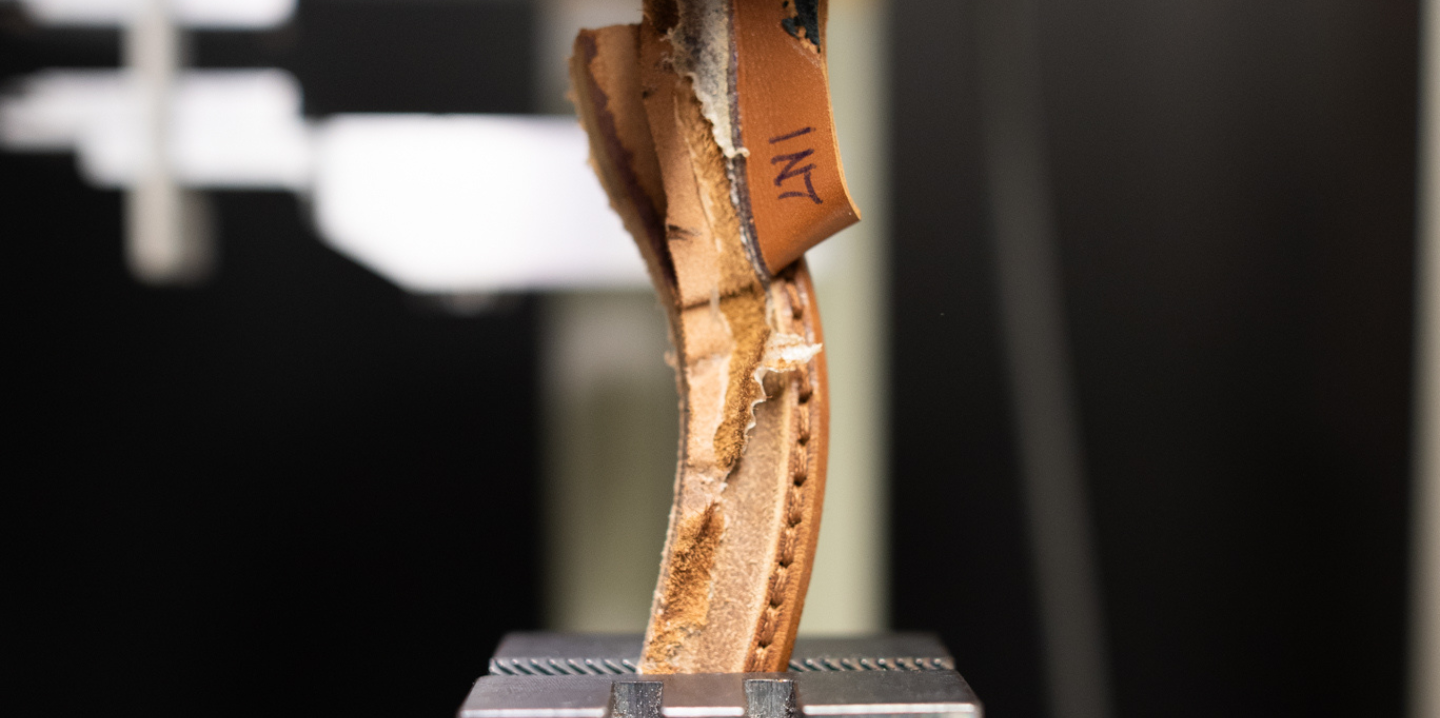In the footwear industry, quality, aesthetics, and durability are key characteristics that influence consumer choices. Customers expect footwear to withstand daily use without deterioration. To meet these expectations, footwear manufacturers and brands must subject their products to rigorous physical tests.
In this series of articles, we will explore the importance of key performance tests, their role in the production process, and their impact on footwear quality.
Performance tests on finished footwear, accessories, and raw materials serve as a preventive measure. They ensure the quality of a sample before mass production begins, helping to avoid additional costs.
Upper/Sole or Multi-Layer Sole Adhesion Test
One of the most crucial physical tests is the upper/sole or multi-layer sole adhesion test, which evaluates the bond strength against wear and material separation. Let’s take a closer look at how these tests are conducted and why they are essential.
Test Objectives
The adhesion test aims to measure the force required to separate the upper from the outsole or to detach the internal layers of a multi-layer sole. This evaluation is crucial to ensure that footwear can withstand daily stress without structural defects. Additionally, the test is mandated by certain international standards as a requirement for various foreign markets.
Test Procedure
- Sample Preparation: samples are taken from the shoe’s edge in areas subjected to the highest stress, such as the shoe’s flexing zone. Upon specific request, tests can also be conducted on the heel area, which undergoes particular stress when shoes are removed using the opposite foot.
- Dynamometer Test: the sample is secured to a dynamometer, which applies force to separate the materials while recording the required force during the detachment of the upper from the sole. This process determines the adhesion strength and helps identify potential weak points in the construction.
- Result Evaluation: test results are expressed in Newton per millimeter (N/mm) and are obtained by dividing the average force measured by the dynamometer by the width of the tested specimen or bonded section.
- Classification: based on practical experience, different types of footwear can be classified according to the mechanical stress exerted on the upper-sole bond during use as follows:
- Class A: Low stress on the upper-sole bond during use (e.g., baby shoes, indoor footwear, fashion footwear)
- Class B: Medium stress on the upper-sole bond during use (e.g., men’s city shoes, women’s city shoes, cold-weather shoes, casual shoes)
- Class C: High stress on the upper-sole bond during use (e.g., children’s footwear, general sports shoes)
- Class D: Very high stress on the upper-sole bond during use (e.g., mountain shoes)
- International Standards: the test strictly follows the ISO 17708 standard, ensuring precise and reliable results.
An effective adhesion test provides a significant competitive advantage for footwear manufacturers because:
- It guarantees quality: The strength of the bond between the upper and sole prevents premature separation and ensures product durability.
- It reduces complaints: Preventing defects during production helps reduce returns, complaints, and associated costs.
- It ensures compliance with standards: The tests ensure that footwear meets international regulations, allowing products to enter global markets.
Analytical Support
If you want to learn more or need assistance with physical tests for your footwear, contact us. Our experts are available to help you ensure the highest quality for your product.

